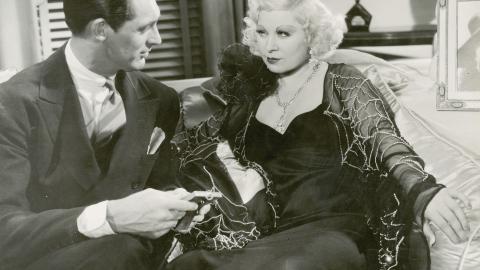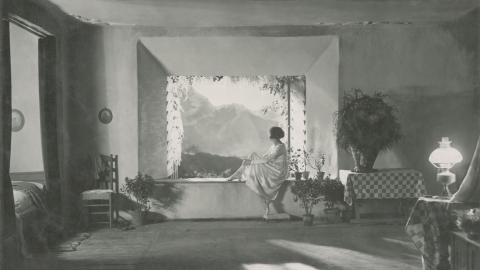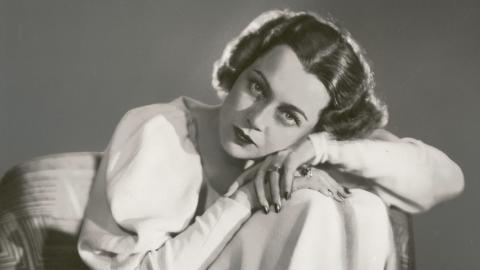
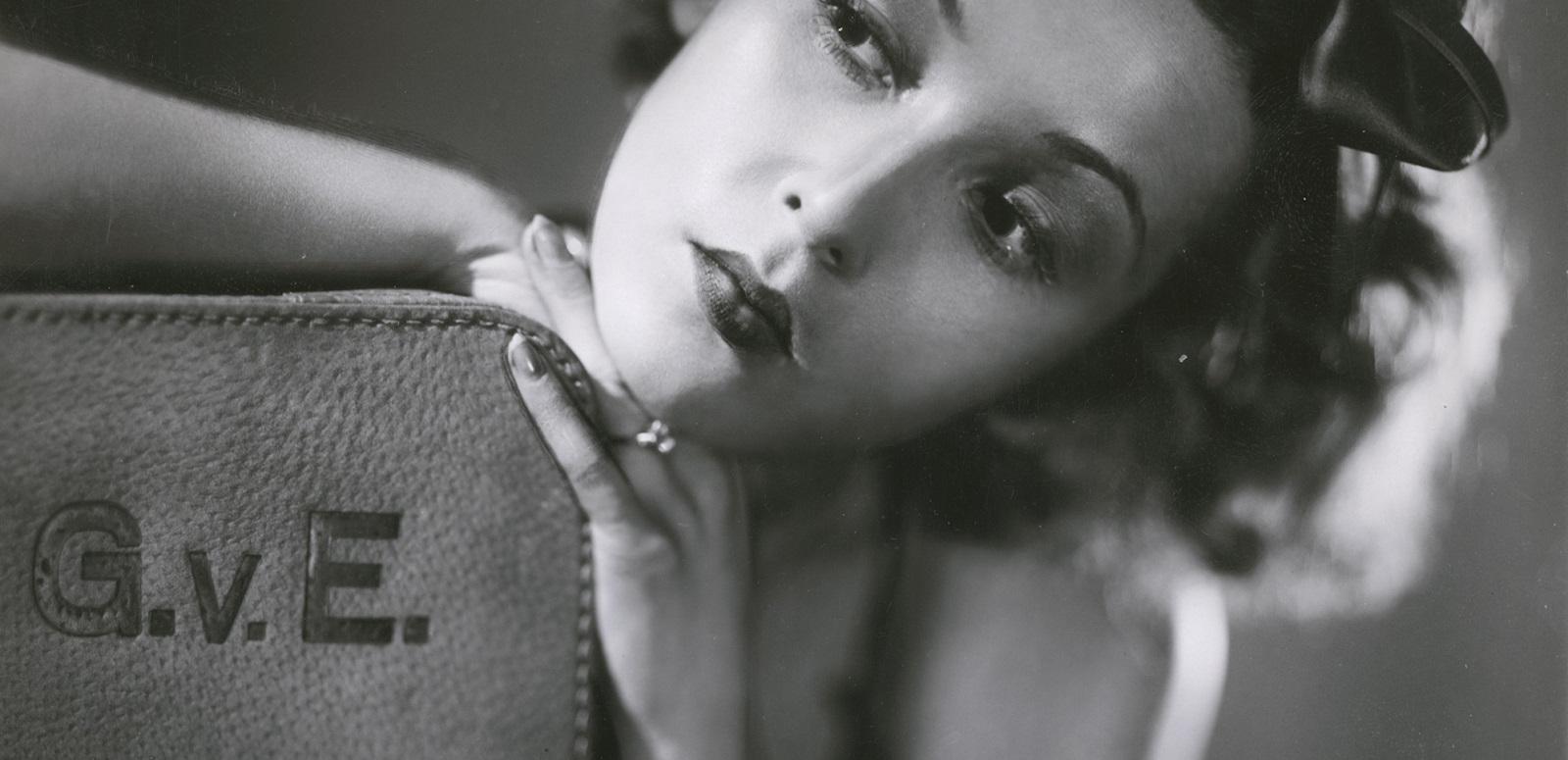
Actors vs Nazis: the Taussig collection
Actors vs Nazis: the Taussig collection
Accessioning Officer, David Atfield, from Collection Stewardship at the NFSA, discovers the fascinating movie-star wartime stories behind a series of photos in the NFSA collection.
I have recently been adding to the NFSA collection a treasure trove of international movie stills and photographic portraits of actors from the 1920s and 1930s, collected by JC Taussig (1907-1989), an Austrian journalist who emigrated to Australia in 1947.
The photographs were initially placed with the National Library of Australia in 1953 as a seminal part of its emerging film stills collection, which is now part of the NFSA collection. Most of the Taussig photographs are from Germany and Austria. The late 1920s and early 1930s were turbulent times in these countries, including for their film industries, and each face in these photographs has an amazing story to tell.
At the time, the industry was faced with the transition from silent to sound films, while the onslaught of the Great Depression was causing financial chaos. Soon after, the rise of Nazism led to the eventual total control of the film industry by the Minister of Propaganda, Joseph Goebbels.
Those silent film actors who survived the transition to talkies were then faced with an agonising decision: whether to continue working under the Nazi regime and its strict content restrictions, or to leave Germany and try to re-establish their careers in other countries.
For Jewish actors, of course, there was no choice, and many found themselves in Hollywood, where some thrived and others slipped into obscurity. In Germany all Jews were banned from working in the film industry and even films made by Jewish filmmakers prior to the rise of Nazism were banned. Those who stayed constantly ran the risk of falling out of favour with Goebbels and, consequently, losing their careers or their lives.
Zarah Leander (1907-1981), the Swedish actor who became a major star in Nazi Germany, once met Goebbels at a party. Goebbels, who disapproved of Leander’s popularity because she was not German, reportedly said to her ‘Zarah – that’s a Jewish name, isn’t it?’ to which she replied ‘Well, what about Joseph?’.
Most who enjoyed success under the Nazi regime struggled to obtain employment after the war, with many banned from working altogether. The great German actor Emil Jannings (1884-1950), who won the very first Oscar for Best Actor for his work in The Last Command (1928) and The Way of All Flesh (1927) in 1929 and became an important figure in Nazi cinema, was one such case. Reportedly, as American troops marched into Berlin, he emerged from the rubble clutching his Oscar statuette and approached them saying: ‘Don’t shoot, I have won an Oscar!’ He never worked again.
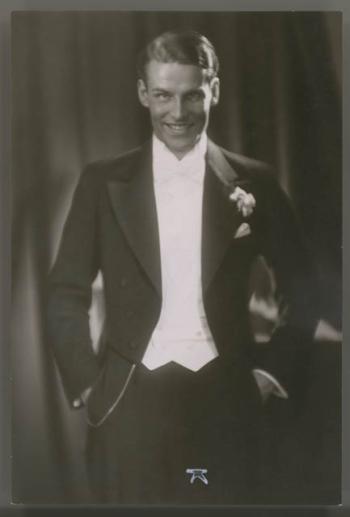
Two other fascinating stories are those of actors Helmuth Kionka (1906-1936) and Olga Tschechowa (1897-1980) (NFSA title no. 1084946).
Kionka was a promising, handsome, young actor and writer, who established himself on the theatre stage, and was just starting his film career when Hitler came to power. He was immediately banned from working because he had previously written anti-fascist articles. He became involved in the Resistance and fled to Vienna, then Zurich, and finally Paris where he continued to work with anti-fascist groups to undermine Hitler’s regime. In 1936 he was lured back to Berlin by an appealing offer of work at a new theatre. The offer was a complete fabrication, and he was immediately arrested upon his arrival. He was tried and convicted of treason and executed in September 1936, aged just 29.
Olga Tschechowa’s story is epic and worthy of a Hollywood movie. Born in Russia, but of an ethnic German family, she was the niece of Anton Chekhov’s wife, Olga Knipper. She studied at the Moscow Art Theatre and became a star of the Soviet stage. Somehow wrangling a travel permit from the Soviet Government, she left Russia for Berlin in 1920, and never went back. She soon became a major film star in European films, working with such directors as FW Murnau, René Clair, EA Dupont and Alfred Hitchcock. As a favourite of, and eventual personal friend to, Adolf Hitler, her career continued to thrive in Nazi Germany.
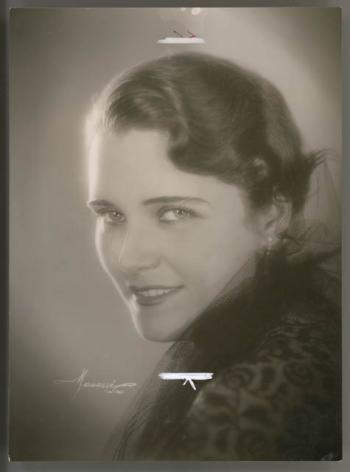
But rumours soon circulated that she was a Soviet spy. She may well have been, given that her brother was. Stalin had sent him to Germany in a botched scheme to assassinate Hitler. Amazingly Tschechowa would later use her influence to have him freed from a concentration camp. Stalin attempted to recruit Tschechowa as a spy on several occasions. At the same time, she was vilified in Russia for being photographed with Hitler.
Eventually SS leader Heinrich Himmler decided there was enough evidence to arrest Tschechowa for espionage. When he arrived at her flat, he reportedly found she was not alone – Hitler himself was there and quickly told Himmler to leave. Tschechowa, hearing her arrest was imminent, had apparently asked her friend to come save her.
After the war Tschechowa was arrested by the Soviets, and taken back to Moscow, where she had a private audience with Stalin. The contents of that meeting are unknown, but she was soon allowed to return to Germany and resume her career. She continued to act through to the 1970s and even ran a successful cosmetics company. She died in Munich in 1980, at the age of 82. Was she a Soviet spy, or even a double agent? We will probably never know for sure.
These are just some of the stories that have emerged from the people in these beautiful, classic photographs, a handful of whom are still alive. The youngest is former child actor Traudl Stark, born 1930 (and 86 at time of writing). Singer and actor Mártha Eggerth died in December 2013, aged 101. Thanks to the prolific collecting of JC Taussig, all of these people will obtain some measure of immortality as the original photographs are being preserved, and the entire collection digitised.
The photographs published here were created by the Foto-Salon Manasse, a famous photo studio that operated in Vienna from 1922 to 1938, specialising in celebrity and nude photography. It was run by Olga Solarics (1896-1969) and her husband Adorja’n von Wlassics (1893-1946).
The National Film and Sound Archive of Australia acknowledges Australia’s Aboriginal and Torres Strait Islander peoples as the Traditional Custodians of the land on which we work and live and gives respect to their Elders both past and present.
